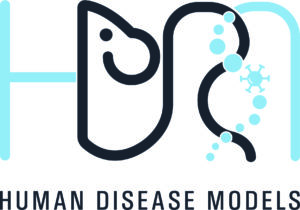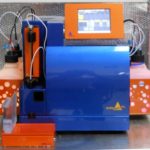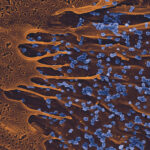Created in 2021, part of the Center for Animal Resources and Research, the Human Disease Models Core Facility produces mice harboring a human immune system (HIS mice) and provide expertise for the possible applications of this model.
HIS mice engrafted with human Hematopoietic stem cells (HSC) are advantageous in vivo models for long-term studies in the field of human immune cells biology, immune-oncology and infectious disease. They constitute a small animal model in which to analyze potency and safety of new drugs modulating the immune system.
HIS-mice are immunodeficient recipient mice that have been transplanted with a human immune system, or some of its components. Our basic model uses a BRGS (Balb/c-Rag2-/-IL2R γ -/-SIRPαNOD) highly immunodeficient recipient lacking T,B (Rag2-/-) and NK (IL2Rγ-/-) cells as well as macrophage tolerance due to the human-compatible SIRPα gene. This immunodeficient mouse strain is well reconstituted with human immune cells from human hematopoietic CD34+ stem cells. This model develops all major human lymphocyte classes (B, T and NK cells) and their specialized subsets as well as a variety of myeloid cells (dendritic cell, monocytes, and macrophages).
More recently, new models have been derived from BRGS mice to improve differentiation and activity of some human immune cell sub-populations
– BRGS-A2DR2 (expressing HLA-A2 and DR2 transgenes) HIS mice with improved human T-cell development and function after injection of matched HSCs.
– BRGSF (BRGS Flk2-/-) HIS mice with improved human myeloid and NK lineage after boost with soluble Flt3L.
– BRGST (expressing mTSLP transgene) HIS mice with improved lymph node development.
Within the HDM core facility, we produce humanized mice from these differents immuno-deficient mouse models.
If you are interested by working with us or If you want more informations, please contact hdm@pasteur.fr
To find out more see the Technology Department brochure here.








